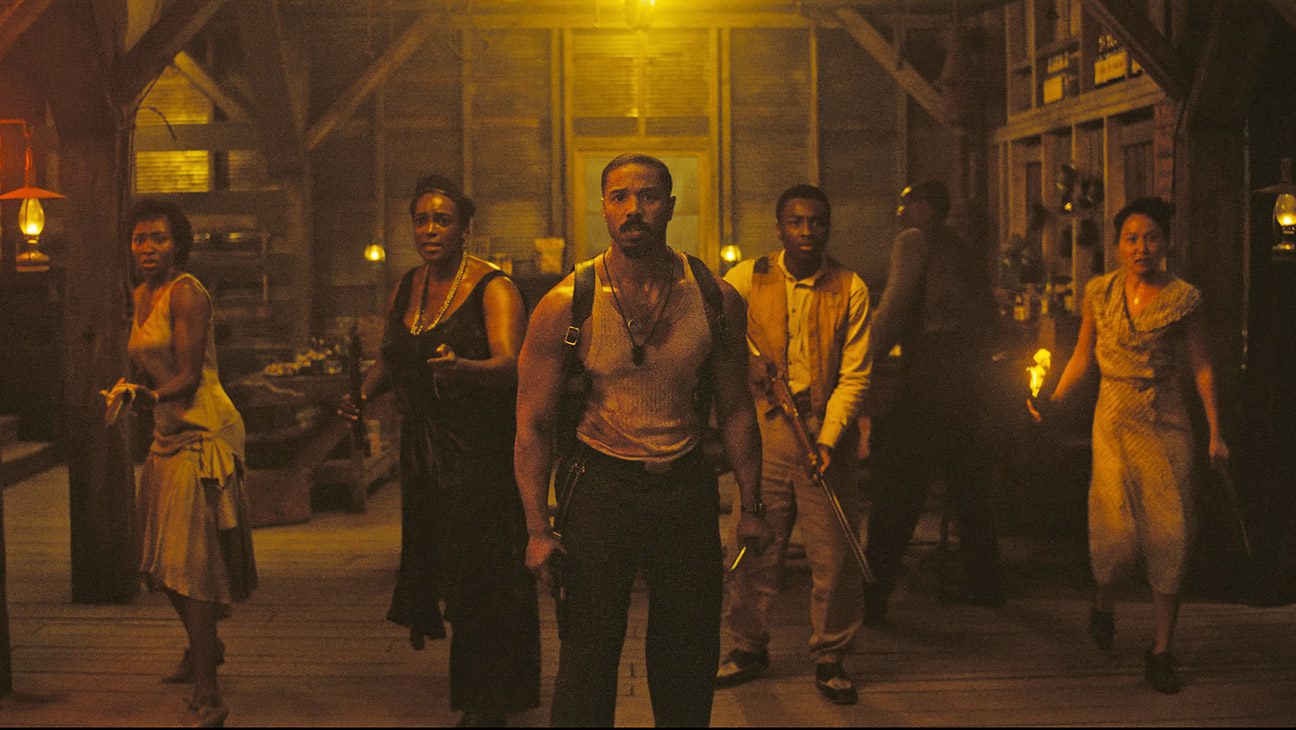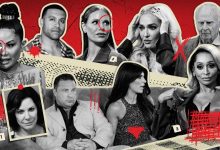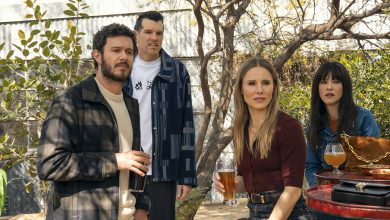Autumn Durald Arkapaw on ‘Sinners,’ the Celluloid Revival and Redefining Big-Screen Style

When Autumn Durald Arkapaw first decided to pursue a career in cinematography, she found it hard to find female role models. “I started looking up research on who shot my favorite films. And I couldn’t find a woman,” she recalls. “Finally I looked at Blow (2001), my favorite Ted Demme film, and I saw Ellen Kuras’ name, and I was like: ‘Oh, well, there’s one. There can be more.’”
Nearly two decades later, Arkapaw has become the one young female DPs want to emulate. Her career spans micro-budget indies and music videos (for Arcade Fire, and The Weeknd among others) to big-budget series — her work on AppleTV+’s Loki,which introduced a darker, more sinister palate to the candy-colored MCU, got her her first Emmy nominations — to tentpole studio films (Black Panther: Wakanda Forever, Sinners). She made history on Sinners as the first female DP to shoot a feature on 65mm IMAX and her widescreen lensing of Ryan Coogler‘s period epic vampire movie has been credited as a major factor in the film’s success.
Arkapaw sat down with The Hollywood Reporter at the Camerimage film festival to talk nominative determinism, her love of old school celluloid and using her platform to open doors for the next generation of women behind the camera.
Is it true that you were named after a John Ford Western?
Yeah, my full name is Autumn Cheyenne Shadow Durald Arkapaw. My father and mother both named me, but one of my father’s favorite films was Cheyenne Autumn (1964) which is a John Ford Western, and it was also shot on 65 millimeter. So that’s a kind of circular thing that’s very odd.
Do you see it as fate that you ended up making history as the first woman to shoot a 65 mm film in IMAX?
I mean, my mom thinks that. But I’m a little more level headed. I’m still trying to absorb how the press and everyone has responded [to the film]. It’s just been so lovely. So I laugh when I think about it.
You started with photography. What was the turning point where you decided, “I’m going to become a DP”?
I did a photography course in high school, developing my own film that sort of thing. Then in college I went to LMU (Loyola Marymount University) for art history. I had a camcorder, and I would make little movies with my friends and edit them in iMovie but I never thought anything of it. Then I took a film course at LMU, and had to write a paper on Broadway Danny Rose and Raging Bull. And that really opened my mind up to what a cinematographer did.
So I started looking up research on who shot my favorite films. And I couldn’t find a woman. Finally I looked at Blow, which is my favorite film from Ted Demme, and I saw Ellen Kuras’ name, and I was like: ‘Oh, well, there’s one. There can be more.’ I became kind of obsessed with the job. I started looking at film schools and at the AFI you can do cinematography as a master’s. So I went to AFI in 2007.
How did the transition come from doing independent films like Palo Alto to bigger studio projects, leading up to Ryan approaching you for Black Panther: Wakanda Forever?
Palo Alto was actually my third film. My first feature [2009’s Macho] was done in between my first and second year at AFI, which was lovely, because I got to collaborate with like the people I met at school. We shot on 35mm it was a very tiny film where the director [Rafael Palacio Illingworth] was also the lead actor. It won best micro-budget feature at Raindance. So it was nice to be able to graduate and say: I’m a DP now. I have a feature.
I did Palo Alto as my third film and I met [director] Gia [Coppola] through another cinematographer classmate of mine. He was unavailable one day, and she was shooting some small videos for James Franco to show him the vibe of what she wanted to do. So I filled in, I did that film. I dabbled in indies for a while, but was always looking to, you know, graduate into the studio film world. And that didn’t happen until I did The Sun is Also a Star (2019), which was for MGM.

But I think [Disney+ series] Loki was my biggest break into what you are talking about. Having a big budget, having the authority to kind of set the look and be more aggressive in setting the mood and tone. It was a new streaming series for Marvel and [lead actor] Tom Hiddleston was very excited to do something new and bold. So the idea of using lighting as a character, getting moodier lighting to set the tone, was embraced by the studio and the director. We pushed the envelope on that series, and it was great.
Then Rachel Morrison [DP on Black Panther] decided to move into directing, so she was unavailable for Panther 2. Rachel texted me: I think you should meet Ryan because I’m not gonna be able to do this, and you guys would get along great. We had a Zoom call. And I felt like I was talking to my cousin. We got on right from the start.
On Loki and Wakanda Forever, you seemed to bring a darker tone and different color scheme to the MCU, which had often been very bright.
Kate Herron, the director of Loki, had a great meeting, and we were both on the same page as far as the visual storytelling of that film. We had all the same references. We were allowed to think big and make things darker, use more aggressive lensing, do everything in camera. We built ceilings on Loki, which is rare for Marvel. We fought to have full structures that actors could walk through. Which I was really appreciative of, because I definitely don’t want to be shooting blue screen. I want the actors to have a real space. I want to get everything in camera as much as I can.

It was really nice to be able to operate in that zone on that high of a level, and have the financing to support the big sets, put cameras on cranes and light things aggressively. We were able to spread our wings. Then it was nice to see audiences respond to that, to notice that it was a shift and to really enjoy it. Because it was all in service of the story.
When it can be cohesive like that, audiences appreciate it. It’s the same for Sinners, where you have a director like Ryan who really wants to push the visual style and be brave. I’m always down to support that, because I feel that’s when you get the biggest emotional response from the audience.
What were the discussions with Ryan about shooting Sinners in a wide format on celluloid, given that Wakanda Forever was shot digitally?
Well, Ryan wanted to originally shoot on 16 mm because he had such a great time using that on [his debut film] Fruitvale Station (2013). He loved shooting that picture with the camera. It’s a very ergonomic camera. You can be fast, you can run around. So that was the original concept for Sinners. I don’t know if you’ve heard, but the code title for the film was Grilled Cheese. You know something you can make quickly with your friends but still tastes good. We joke we took the grilled cheese and made it into a Michelin star meal.
But my deepest love is always film, because I came up in film, shooting film at AFI. So when the studio called Ryan and they started discussing large format, he called me and we had a great talk. He’s like: ‘Let’s get a test going.’ We’ll go out to the desert because it has a flat horizon that kind of mimics what was on the page for the script, and we just explored it. He was the first to mention the 2.76:1, The Hateful Eight format as something that could be interesting for what we’re shooting. You know, the sun rise and sunset being so important in this folklore, the vampire genre. So we did the test and once you do a test and see the 65 mm projected, you don’t go back. It’s just so beautiful.
What do you think about this younger generation being so into celluloid, even though many of them didn’t grow up seeing films projected that way?
It’s like in the 50s, when CinemaScope came about and the anamorphic lens was adopted as a way to get people outside of their homes watching television and give them an experience. It’s funny now we’re in 2025 and we’re taking the format as far as it goes, telling people this is going to be different than anything you’ve seen before.
I don’t necessarily think it’s new, but it’s kind of a resurgence. Ultra Panavision has been around. We’re the 11th movie in history to shoot on it. But I do remember when The Hateful Eight came out, and they did a road show to say: Come and see something really different, and people appreciate that. I think it’s thoughtful way to show films these days.

Let’s talk about some of the actual scenes from Sinners. The Juke Joint sequence, where we see the entire history of Black music play out in a single party, is phenomenal. Is it true that was shot in a single day?
The interior was. We go from interior to exterior, it tilts back down. Was shot the interior in one day, and it’s shot on IMAX 15-perf, on a Steadicam. And it’s a Oner, but because the mag only lasts for 76 seconds, there are three stitches in the shot that allow it to become one fluid shot. There’s a lot of kind of logistics we had to work out in order to make that feel like one cohesive, fluid motion.
Is that the shot you’re most proud of in Sinners, or is there another one that stands out for you?
I have so many different favorite shots. I generally think there are two, but ultimately, for me it’s the farmhouse sequence, when Remmick [Jack O’Connell] jumps into frame and is introduced to the audience. It’s kind of like a mini-Western. We shot it over two days and Ryan knows I love Westerns, so we were able to really have fun with that. It felt like an old movie to me, kind of very timeless sequence. I love the way that Ryan and editor cut it together.
You said when you started out, it was almost impossible to find a female DP. How do you view where we are now in that regard?
I have a very personal response to that question, I have a lot of women that contact me, especially after Sinners, that are saying: Thank you, you know, for existing, for making work where we can see ourselves. I’m come places like here at Camerimage, and 70 percent of the audience are young female students. That makes me feel positive about the climate, that there are females wanting to tell their stories and create images. We’ve had eyeballs for years.
So that’s my perspective. But on the other side of things is the question of how much are they greenlighting female stories? How much are they being supported, financially, by the studios? That’s a different question. I think people are speaking about that if they feel things are going backwards. But as far as the feeling that women want to be storytellers and cinematographers, it’s much better than it was when I was in school.
I try to do as many talks as I can now, so that these women see themselves reflected. I’m fortunate enough to do these big budget films, and those opportunities have come from Ryan. He supports female filmmakers. Most of our heads of department are women of color. So I feel positive about it, but I’m also in a very fortunate position to be able to be telling original stories at a certain level. That’s not lost on me, but I try and pay it forward and do as much as I can to encourage women to continue to tell their stories and not get discouraged.
HiCelebNews online magazine publishes interesting content every day in the movies section of the entertainment category. Follow us to read the latest news.





